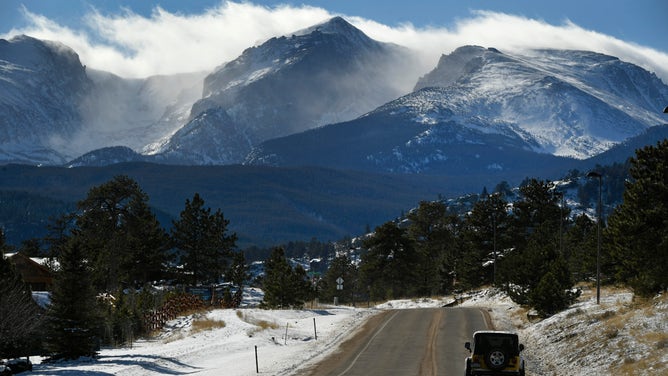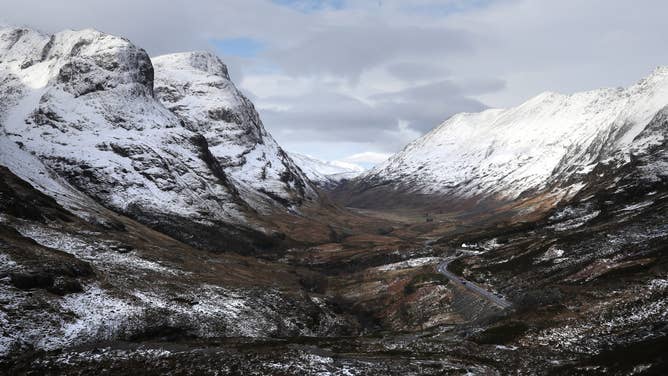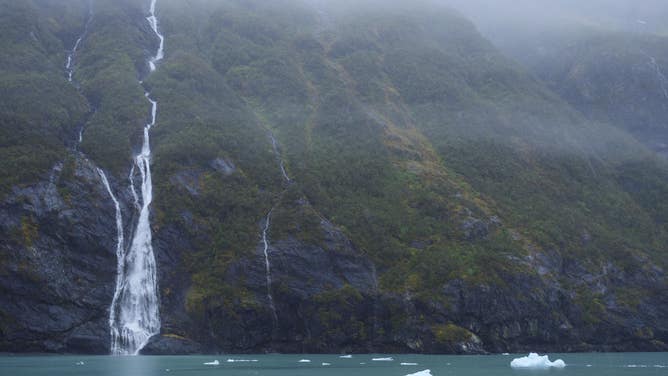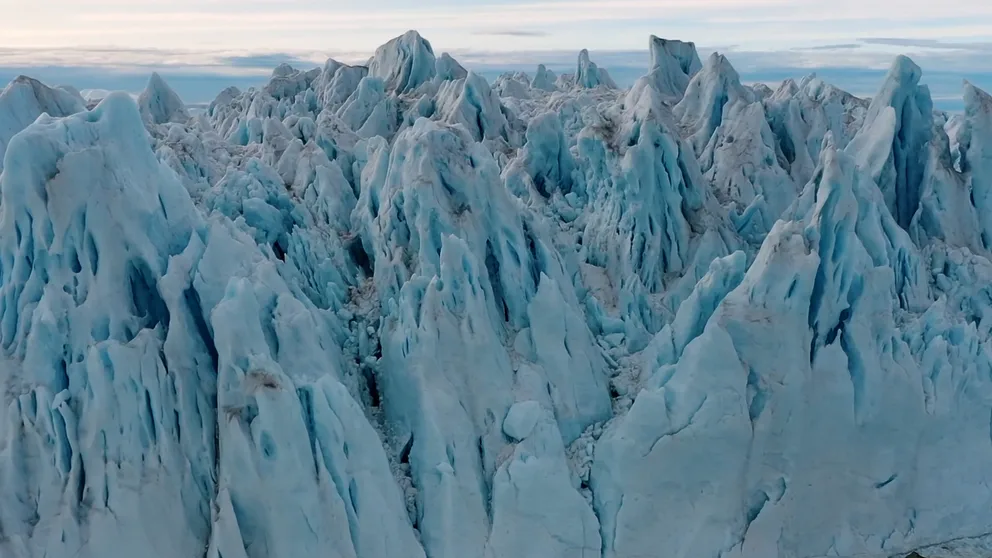How ice transforms the landscape
Glaciers have sliced through seemingly impenetrable rock to sculpt mountains, valleys and other stunning landscapes.

The Grosser Aletsch Glacier running between mountains in the Swiss Alps.
(Prisma by Dukas / Universal Images Group / Getty Images)
Glaciers have sculpted some of the most stunning landscapes on Earth.
Over thousands and millions of years, they’ve used ice as their knife to cut through seemingly impenetrable rock.
Even after some glaciers have disappeared, the ghosts of their presence remain in the negative space between mountains.
A force of nature
How ice transforms the landscape
Glaciers have sculpted some of the most stunning landscapes on the planet.
"A glacier is a mass of snow and ice that builds up from snowfall in the mountains not being able to melt in the summers," said Louis Sass, glaciologist for the U.S. Geological Survey based in Alaska.
"If you get so much snow that it doesn't melt, it starts to build up, and eventually that's going to compress into ice," Sass added.
That ice will get thicker and heavier, and then it'll start to flow downhill.
Alaska is home to many of these solid rivers of ice. Their flow might be easy to miss, as it may occur incrementally over thousands or millions of years, causing the ice to appear at a standstill.
However, this stillness is a guise, for the glacial ice — as slow as it may be — remains a formidable force of nature.
The ghosts we see

High winds blow snow off the craggy peaks of Rocky Mountain National Park.
(Helen H. Richardson / The Denver Post / Getty Images)
"The glaciers are this key part of making that classic mountain landscape that we think of, with pointy peaks and broad, rounded valleys," said Sass.
According to Sass, when mountains form without glaciation, they end up having more subdued features.
For instance, the Great Smoky Mountains did not have glaciers form around them, so they’ve remained relatively modest and smooth.
The Rockies, in contrast, had glaciers snake between the mountains, leaving behind tall and sharp peaks.
One on the tallest peaks in North America, located in Alaska’s Denali National Park, is currently being carved by a glacier. According to Sass, it runs 60 miles long and covers about 19,000 vertical feet.
A dram of geology

A view of Glencoe in the Scottish Highlands.
(Andrew Milligan / PA Images / Getty Images)
While the United States still has glacial reservoirs in states like Alaska, some countries that were once dominated by the icy giants no longer have them.
However, their landscape tells a tale of ice that once reigned supreme.
Scotland, known for its eponymous whiskeys, is known for its otherwordly landscape largely formed by glaciers thousands of years ago.
"Many times there has been a mile-thick layer of ice covering all of Scotland," said Angus Miller, geologist for the Edinburgh Geological Society. "That's a lot of weight, a lot of pressure."
The peak of ice in Scotland occurred about 20,000 years ago, according to Miller. Called the Last Glacial Maximum, this glacial period was when an ice sheet covered much of the northern hemisphere.
Whether the ice cut through the rock of Scotland or Alaska, the process by which they sculpt the landscape is the same, and it lies far beneath the glaciers’ snowy surface.
Worn down by rock and time

Accumulations of debris form lines known as "medial moraines" in Alaska's Klutlan Glacier. The glacier is about 40 miles long and flows from eastern Alaska into Canada’s Yukon Territory.
(Chris Larson / University of Alaska, Fairbanks / NASA)
According to Miller, as glacial ice moves and spreads out, it picks up bits of rock.
"That's what really gives the glaciers and the ice caps their teeth, the fact that they've got these bits of rock embedded in them," said Miller.
This rocky material wears down the landscape in a process called glacial erosion.
According to Miller, glacial erosion has gone on in Scotland for tens of thousands of years as ice has grown and receded.
"The overall result, as we see it today, is an ice-carved landscape," said Miller.
One of the most common features in the highlands of Scotland are deep valleys.
"We call them ‘glens’, where the ice has followed a path and scoured really deeply," said Miller. "It opens up what might have been a river valley originally and makes a U-shaped valley."
Cascading effect

A waterfall near Surprise Glacier, located northwest of Anchorage, Alaska.
(Education Images / Universal Images Group / Getty Images)
In addition to carving out the landscape, glaciers can also carve out spaces where life can grow.
"As soon as ice is melting, there's a lot of material on the move, a lot of water on the move," said Miller. "One of the things you can get is water currents that start sweeping small particles away and depositing them somewhere."
According to Miller, these glacial deposits form the basis of soil, which become fertile areas for grazing land for livestock and developing land for agriculture — such as barley used in whiskey manufacture.
According to Sass, the seasonal freshwater that comes from melting glaciers impact wildlife around the glacier.
"It affects the ecosystem of the river downstream," said Sass. "All of the plants that are living there, all of the organisms are adapted to live in the conditions that these glaciers are causing."
Glacial legacy

A glacier is seen in the Kenai Mountains near Primrose, Alaska.
(Joe Raedle / Getty Images)
Many words can be used to describe the landscapes glaciers leave behind.
"If I had to describe it in one word, I'd probably use 'home'," said Sass, when describing the extremes and beauty of Alaska's landscapes.
Miller spoke of a similar sentiment when describing Scotland.
"It's not just about the buildings or the people, it's about the landscape," he said. "It's around you, and you kind of feel at home."
"I’ve visited many spectacular places in the world. I love traveling, but I love, when I come back, I’m home," Miller added. "This is my landscape."
